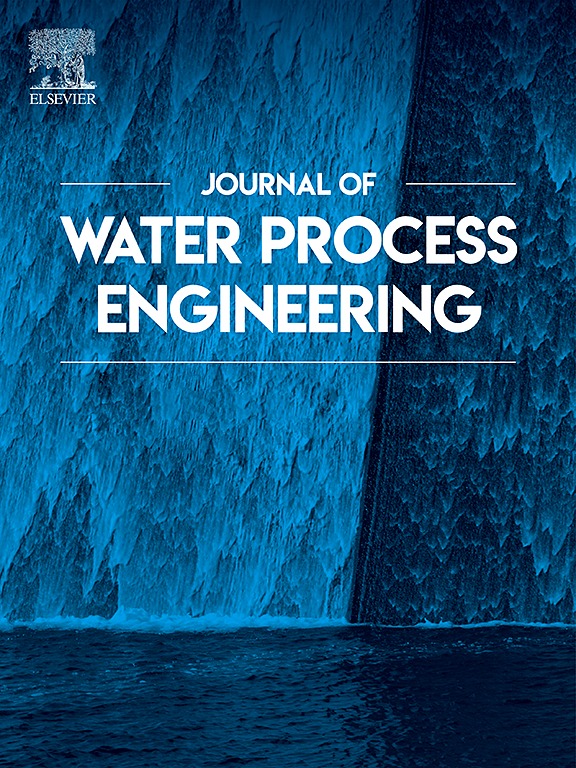Arsenic removal using bacteria immobilized on polyurethane foam in a packed bed bioreactor
IF 6.3
2区 工程技术
Q1 ENGINEERING, CHEMICAL
引用次数: 0
Abstract
Arsenic contamination in groundwater is a cause of global concern. Bioremediation presents a viable alternative to conventional methods employed for arsenic treatment. This study investigated the use of bacteria immobilized on polyurethane foam (PUF) for arsenic remediation in a recirculating packed bed bioreactor. The effectiveness of Proteus alimentorum strain TY6 and Pseudomonas aeruginosa strain K7Pb for removal of As(III) and As(V) was evaluated. Concentrations of arsenic ranged from 250 μg/L to 50 mg/L at varying flow rates. The removal efficiency of TY6 varied from 0.45 % to 99.50 % for As(III) and 0.75 % to 98.40 % for As(V). For K7Pb, the efficiency ranged from 0.79 % to 99.30 % for As(III) and 0.80 % to 99.40 % for As(V). Bacteria immobilized on PUF were found to be highly efficient in arsenic removal. The removal efficacy was found to be above 65 % even at a concentration of 50 mg/L for both bacteria. Both bacterial strains also demonstrated significant potential for arsenic biotransformation. TY6 only oxidized As(III) to As(V), whereas K7Pb only reduced As(V) to As(III). The outcomes indicated that both strains possessed substantial potential for arsenic remediation.

求助全文
约1分钟内获得全文
求助全文
来源期刊

Journal of water process engineering
Biochemistry, Genetics and Molecular Biology-Biotechnology
CiteScore
10.70
自引率
8.60%
发文量
846
审稿时长
24 days
期刊介绍:
The Journal of Water Process Engineering aims to publish refereed, high-quality research papers with significant novelty and impact in all areas of the engineering of water and wastewater processing . Papers on advanced and novel treatment processes and technologies are particularly welcome. The Journal considers papers in areas such as nanotechnology and biotechnology applications in water, novel oxidation and separation processes, membrane processes (except those for desalination) , catalytic processes for the removal of water contaminants, sustainable processes, water reuse and recycling, water use and wastewater minimization, integrated/hybrid technology, process modeling of water treatment and novel treatment processes. Submissions on the subject of adsorbents, including standard measurements of adsorption kinetics and equilibrium will only be considered if there is a genuine case for novelty and contribution, for example highly novel, sustainable adsorbents and their use: papers on activated carbon-type materials derived from natural matter, or surfactant-modified clays and related minerals, would not fulfil this criterion. The Journal particularly welcomes contributions involving environmentally, economically and socially sustainable technology for water treatment, including those which are energy-efficient, with minimal or no chemical consumption, and capable of water recycling and reuse that minimizes the direct disposal of wastewater to the aquatic environment. Papers that describe novel ideas for solving issues related to water quality and availability are also welcome, as are those that show the transfer of techniques from other disciplines. The Journal will consider papers dealing with processes for various water matrices including drinking water (except desalination), domestic, urban and industrial wastewaters, in addition to their residues. It is expected that the journal will be of particular relevance to chemical and process engineers working in the field. The Journal welcomes Full Text papers, Short Communications, State-of-the-Art Reviews and Letters to Editors and Case Studies
 求助内容:
求助内容: 应助结果提醒方式:
应助结果提醒方式:


